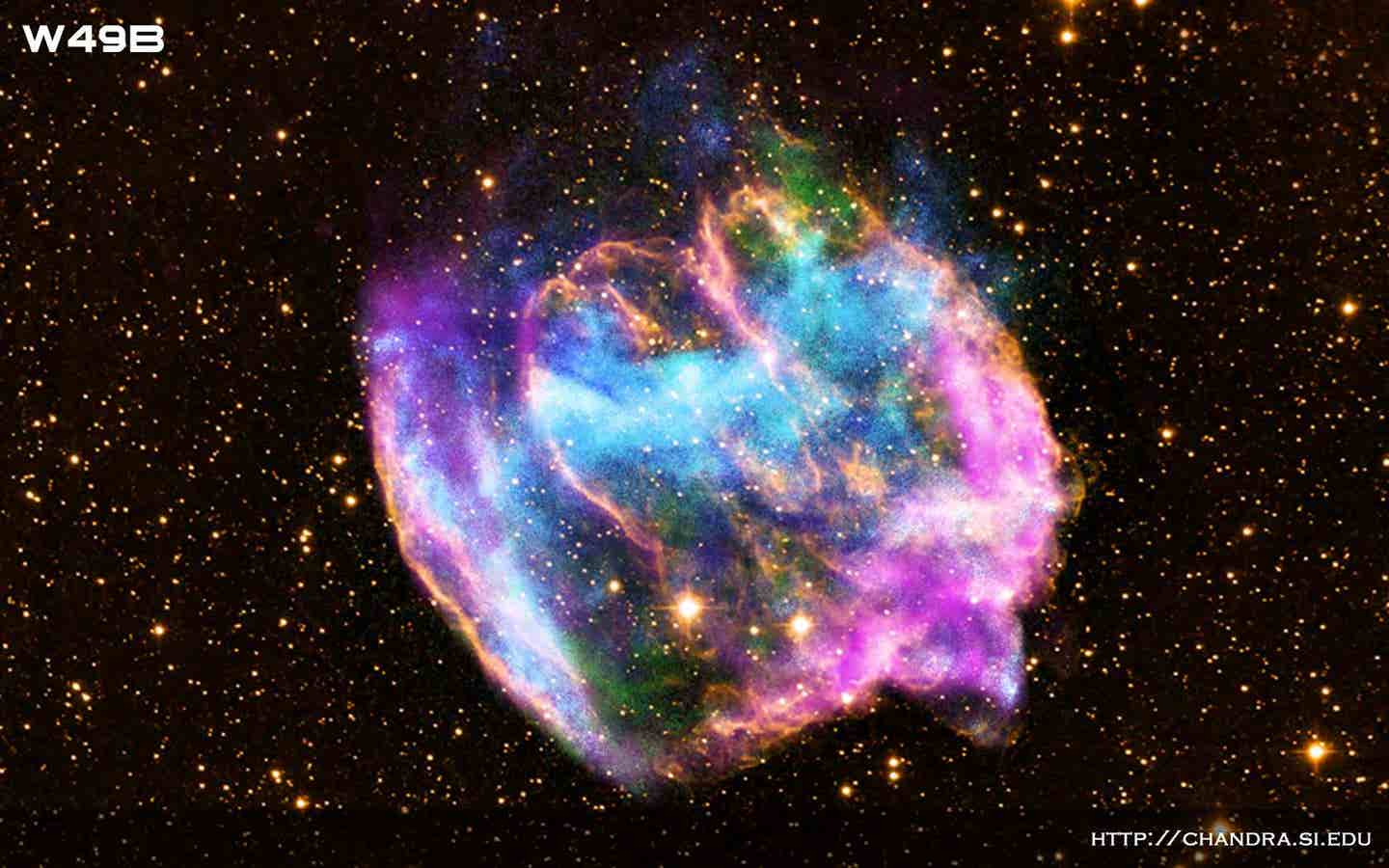New supernova discovery may hold key to the history of the Universe
A groundbreaking dataset of 3,628 Type Ia supernovae could refine how cosmologists measure the universe’s expansion.

The release of 3,628 Type Ia supernovae from the Zwicky Transient Facility could reshape how scientists measure the universe. (CREDIT: Chandra X-ray Observatory)
For over 30 years, astronomers have relied on Type Ia supernovae to measure the universe’s expansion. These stellar explosions serve as cosmic beacons, allowing scientists to track how space itself stretches over time.
In the late 1990s, observations of about 100 of these supernovae led to the discovery that the universe's expansion is accelerating. This revelation, which earned the 2011 Nobel Prize in Physics, introduced the concept of dark energy—an unseen force counteracting gravity on cosmic scales.
Now, an unprecedented dataset of 3,628 Type Ia supernovae could refine how cosmologists interpret these measurements. The Zwicky Transient Facility (ZTF), an astronomical survey based in California, has released this massive dataset, nearly doubling the number of such supernovae studied over the past three decades.
The findings, published in a special issue of Astronomy & Astrophysics, include 21 studies exploring the implications of this data.
“This release provides a game-changing dataset for supernova cosmology,” said Dr. Mathew Smith of Lancaster University, co-leader of the ZTF supernova release. “It opens the door to new discoveries about both the expansion of the universe and the fundamental physics of supernovae.”
Understanding Type Ia Supernovae
Type Ia supernovae occur when a white dwarf star—a dense stellar remnant—accumulates material from a companion star and undergoes a thermonuclear explosion. This process releases an immense amount of light, making them visible across billions of light-years. Because these explosions follow a predictable brightness pattern, they serve as “standard candles,” allowing astronomers to calculate distances across the universe.
Yet, despite their critical role in cosmology, many aspects of these supernovae remain mysterious. Scientists debate whether the white dwarf explodes upon reaching a specific mass or due to other triggers. They also question how differences in the supernova environment, such as the properties of the host galaxy, influence their brightness.
Related Stories
“Thanks to ZTF’s unique ability to scan the sky rapidly and deeply, we have captured multiple supernovae within days—or even hours—of explosion, providing novel constraints on how they end their lives,” said Professor Kate Maguire from Trinity College Dublin, a co-author of the study.
A Breakthrough in Supernova Cosmology
For decades, researchers have refined supernova measurements to reduce uncertainties. Initially, the brightness of Type Ia supernovae varied by about 40%, but statistical corrections have brought that down to just 7%. This improvement has made them one of the most precise tools for measuring cosmic distances. However, subtle factors—such as the properties of the galaxy where a supernova occurs—still introduce uncertainties.
Early studies suggested that supernovae in low-mass galaxies appear slightly dimmer than those in more massive ones. This so-called "mass step" correction has been widely used in cosmological models, but its exact cause remains debated. Some researchers believe it results from differences in interstellar dust, while others suggest it relates to the age of the supernova’s progenitor system.
Dr. Mickael Rigault from the Institut des Deux Infinis de Lyon, head of the ZTF cosmology group, emphasized the importance of this dataset. “For the past five years, a group of thirty experts from around the world have collected, compiled, assembled, and analyzed these data. We are now releasing it to the entire community. This sample is so unique in terms of size and homogeneity that we expect it to significantly impact the field of supernova cosmology and lead to many additional discoveries.”
The ZTF dataset offers an order-of-magnitude increase in low-redshift supernovae—those closer to Earth—compared to previous compilations. This increase is crucial because most systematic uncertainties in supernova measurements stem from calibration issues across different surveys. By providing a single, uniform dataset, the new release minimizes these uncertainties and enhances the precision of cosmic measurements.
Challenging the Standard Model of Cosmology
The expansion of the universe has been studied extensively using supernovae, but recent measurements hint at inconsistencies in the current standard model of cosmology. One of the most pressing issues is the Hubble constant discrepancy.
Direct measurements of the universe's expansion rate using supernovae suggest a value that is significantly higher than estimates derived from cosmic microwave background radiation. This “Hubble tension” remains one of the biggest challenges in modern astrophysics.
Furthermore, recent analyses indicate that the equation of state for dark energy, a key factor in understanding cosmic acceleration, might differ slightly from the expected value of -1. If confirmed, this deviation could suggest new fundamental physics beyond the current model.
Professor Ariel Goobar, Director of the Oskar Klein Centre in Stockholm and a member of the team that first discovered the universe’s accelerating expansion, underscored the significance of the new dataset. “Ultimately, the aim is to address one of our time’s biggest questions in fundamental physics and cosmology—namely, what is most of the universe made of? For that, we need the ZTF supernova data.”
The ZTF camera, installed on the 48-inch Schmidt telescope at Palomar Observatory, scans the northern sky daily. With its ability to detect objects a million times fainter than the dimmest stars visible to the naked eye, it captures nearly every supernova explosion within 1.5 billion light-years of Earth.
An Unprecedented Opportunity
With this influx of data, cosmologists now have an unprecedented opportunity to refine their models and resolve some of the biggest questions in astrophysics. If the discrepancies persist, they could point to the need for a new theory of gravity, changes in the nature of dark energy, or unknown astrophysical effects influencing supernova brightness.
“With this large and homogeneous dataset, we can explore Type Ia supernovae with an unprecedented level of precision and accuracy,” said Dr. Rigault. “This is a crucial step toward honing the use of Type Ia supernovae in cosmology and assessing if current deviations are due to new fundamental physics or unknown issues in the way we measure distances.”
The ZTF team plans to refine the dataset further in an upcoming release, which could provide even more insights. For now, this new wealth of supernova observations marks a significant step forward in understanding the universe’s history—and its fate.
Note: Materials provided above by The Brighter Side of News. Content may be edited for style and length.
Like these kind of feel good stories? Get The Brighter Side of News' newsletter.
Joshua Shavit
Science & Technology Writer | AI and Robotics Reporter
Joshua Shavit is a Los Angeles-based science and technology writer with a passion for exploring the breakthroughs shaping the future. As a contributor to The Brighter Side of News, he focuses on positive and transformative advancements in AI, technology, physics, engineering, robotics and space science. Joshua is currently working towards a Bachelor of Science in Business Administration at the University of California, Berkeley. He combines his academic background with a talent for storytelling, making complex scientific discoveries engaging and accessible. His work highlights the innovators behind the ideas, bringing readers closer to the people driving progress.



